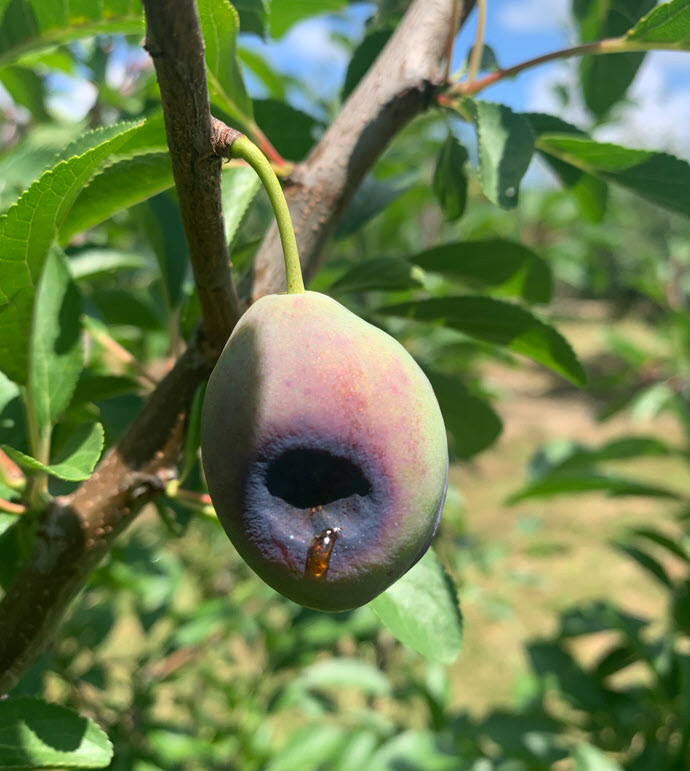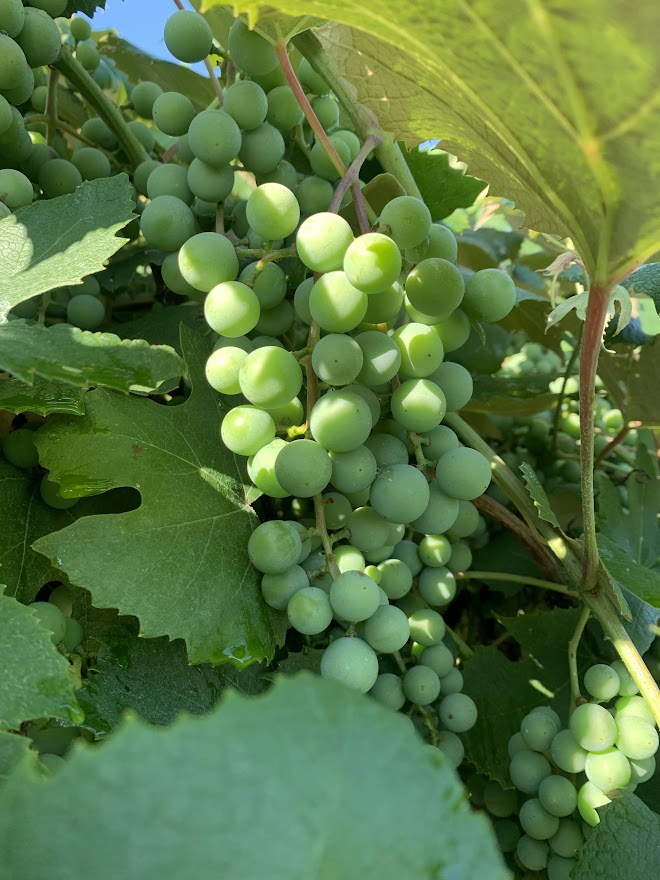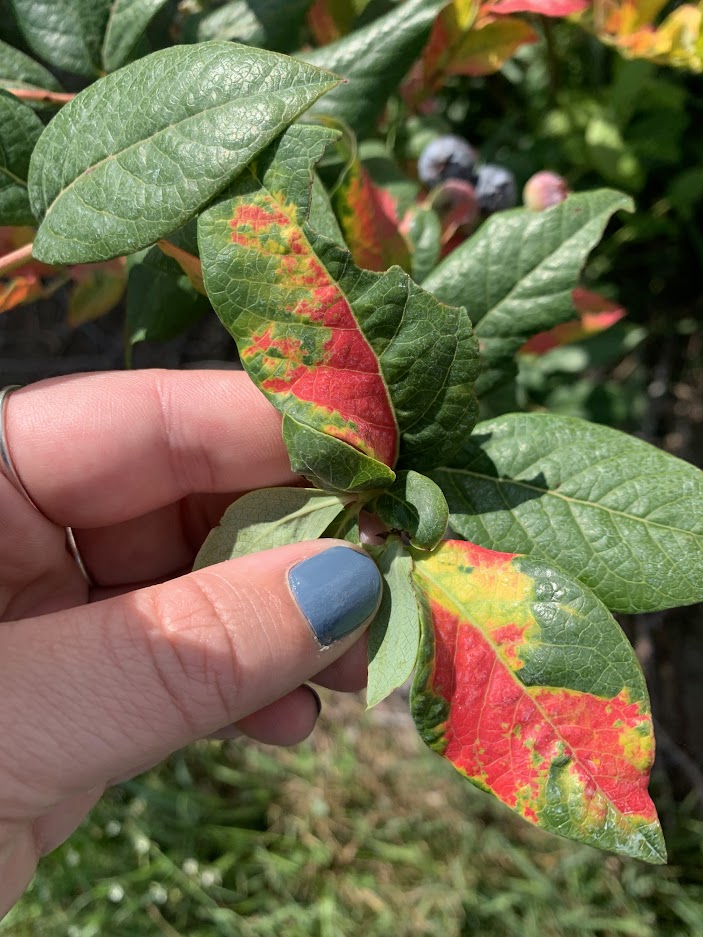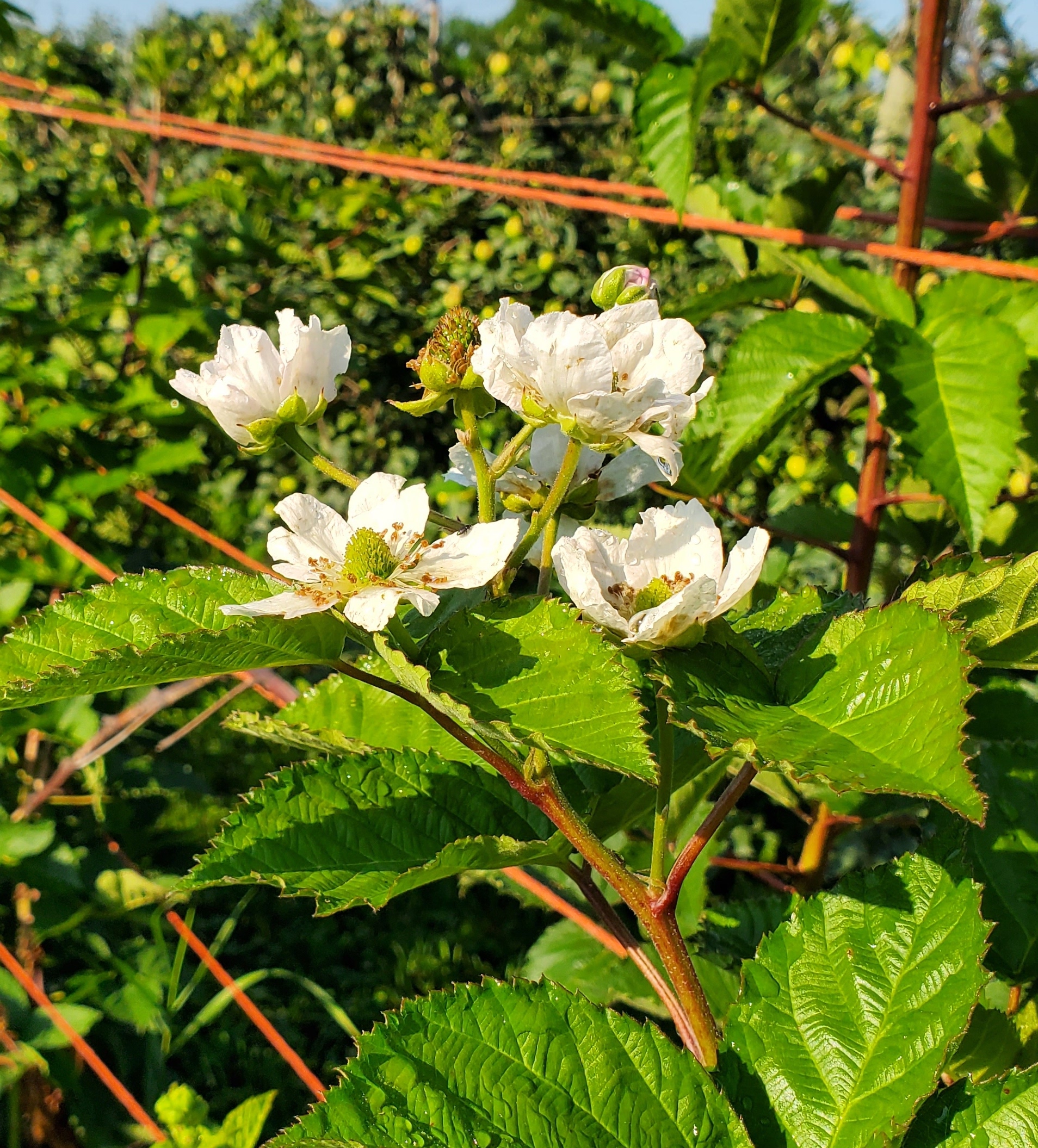Southwest Michigan fruit update – July 19, 2022
Small fruit harvests are in full swing. Stone fruit crops are being harvested as well.

Weather
Last week was cool for this time of year. High temperatures were in the upper 70s with a couple days reaching the low 80s. The region saw several rounds of storms over the weekend. There was a wide variety of rainfall through the region with some areas seeing barely a quarter of an inch and others getting over three inches of rain. On average, Southwest Michigan got 1.4 inches of rain and received 14 hours of rainfall which is slightly less than the week before.
These last few week’s rains have helped moisten the soils, but it doesn't appear to have been enough to reverse the dry trend. Water stressed plants can significantly affect yields, so it is important to keep an eye on your soil moisture levels in order to ensure good yield once harvest comes. Currently, Southwest Michigan isn't in a drought but, drought conditions can be found to the south and north of our region. See the current regional drought monitor.
This week will be warmer with highs in the mid to upper eighties much of the week. We will end the week with some rain over the weekend.
With the cooler week last week, we picked up fewer degree days, 195 growing degree days (GDD) base 42, 139 GDD base 50.
|
Southwest Michigan GDD summary from March 1 through July 18, 2022 |
|||
|
Station |
GDD 42 F |
GDD 45 F |
GDD 50 F |
|
Benton Harbor (SWMREC) |
2255 |
1950 |
1482 |
|
Lawton (Lawton) |
2254 |
1950 |
1486 |
|
Fennville (TNRC) |
2085 |
1788 |
1335 |
|
Average for the SOUTHWEST region |
2223 |
1920 |
1459 |
|
Average last week |
2028 |
1746 |
1320 |
Tree fruit
Trees are recovering with recent rains and more moderate temperatures. Japanese beetle populations are still relatively high.
Peach and nectarine early season harvest continues in central Berrien County, with PF Early 8 Ball and Earlystar. Next up are Brightstar, Garnet Beauty, Summer Serenade, and Early Redhaven. Larvae laid by second generation oriental fruit moth are becoming easier to find in fruit.
In cherries, a few orchards remain to be picked for direct sales. Spotted wing drosophila catch numbers are still at moderate levels but traditionally jump up in the last half of July in southwest Michigan. Leaf drop due to cherry leaf spot is becoming easier to see--management of this disease should continue until at least mid-August so that trees overwinter in good shape.
In plums, varieties Early Golden and Vibrant are now being picked with spot picking of Shiro. Sunburn symptoms on fruit are being noticed in some sites due to 95 degree-plus temperatures of a few weeks ago. Fruit left on the tree until noticeably soft is susceptible to spotted wing drosophila infestations. Gummy fruit due to earlier bacterial spot infections are a problem in some orchards. Any injury to fruit makes it more prone to brown rot infection.

Apple should be protected against the fungal diseases sooty blotch and fly speck infection. EDBC fungicides such as mancozeb, though effective against this disease complex, have a 77-day preharvest interval. Other options include ziram, captan, Flint Extra, Topsin M, and Prophyte.
Apple maggot flies have started showing up in the Trevor Nichols trapline this past week. This insect is a concern on sandy sites with spraying to start 7 to10 days after emergence. Adults can be monitored with sticky traps with attractant colors, shapes, and odors, such as bright yellow panels with protein and ammonia baits and red spheres baited with apple volatiles.
Woolly apple aphid colonies are becoming easier to find. Codling moth and oriental fruit moth are the primary insect concerns for most orchards. Farm-specific trap counts for these two insects are the best guide for judging the need for treatment.
Small fruit
Most grape varieties are at berry touch with some tight-clustered varieties at bunch closure. Disease management of phomopsis, black rot, downy and powdery mildews are the primary focus currently. With tight clustered varieties, this is the last chance to get cluster disease sprays into the clusters. Grape berry moth is in its second generation. For high pressure sites, another cover spray two weeks after the spray at biofix may be warranted. Timing of the first spray was around July 6 for many people, meaning the second spray would be this week. See this article for more information on grape berry moth biofix.

Blueberry harvest is in full swing in southwest Michigan. Fruit set looks good in many locations. Disease focus should be on early fruit rot management. Even with the rain the past few weeks, irrigation should be continued to maintain moist soils, especially in sandy sites. Early fruit size is generally good, but continued water helps keep the berry sizes high for subsequent pickings. SWD populations have increased over the last week, likely due to the rain and cooler temperatures. The numbers are still low but will increase quickly as fruit in the wooded areas around fields continue to ripen.

Bramble harvest continues. Fall bearing blackberries have started blooming. Maintain fungicide programs to protect from fruit rots and monitor for spotted wing drosophila so you can stay ahead of the expected population increase coming soon.

Cranberry bloom has ended There is a wide range of fruit size, from pea to full size. Some fruit rots were observed in the field.
In currants and gooseberries, champagne and red currant harvests are complete. Gooseberry harvest should begin soon.
Hop flowers are expanding. The rains the past couple weeks have been good infection periods. Maintain fungicide programs.
Upcoming meetings
The Southwest Michigan Viticulture Field Day will return to the Southwest Michigan Research and Extension Center for 2022. As tradition holds, the event will be the last Wednesday of July (July 27, 2022) and will include presentations of ongoing research in southwest Michigan. The event will once again conclude with a steak dinner and local wine tasting. Registration for the Viticulture Field Day is online through the Michigan Grape Society’s website.
Related articles
This work is supported by the Crop Protection and Pest Management Program [grant no 2021-70006-35450] from the USDA National Institute of Food and Agriculture.



 Print
Print Email
Email
